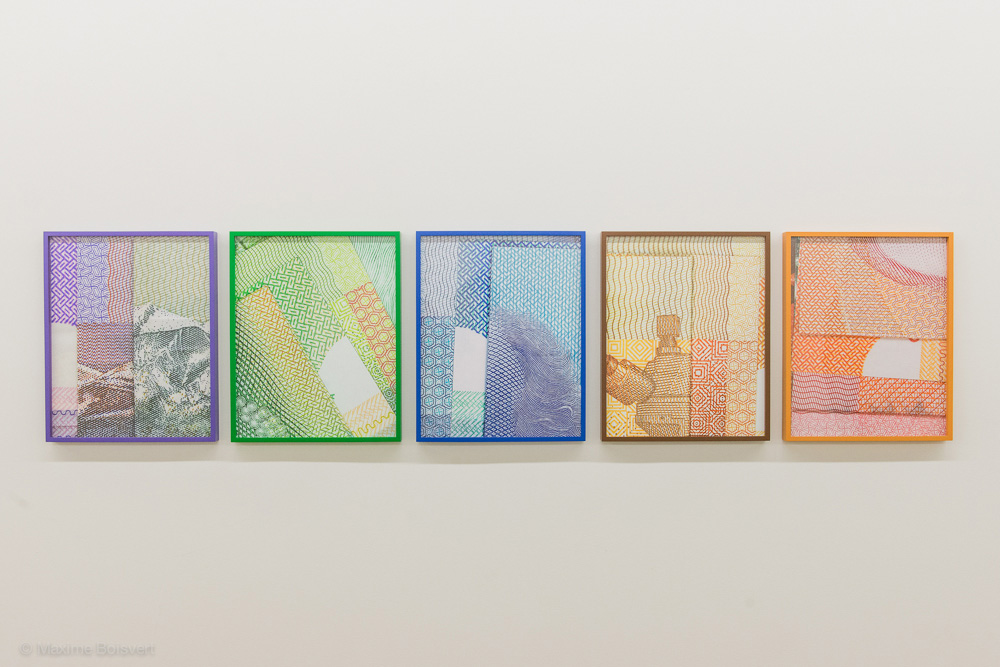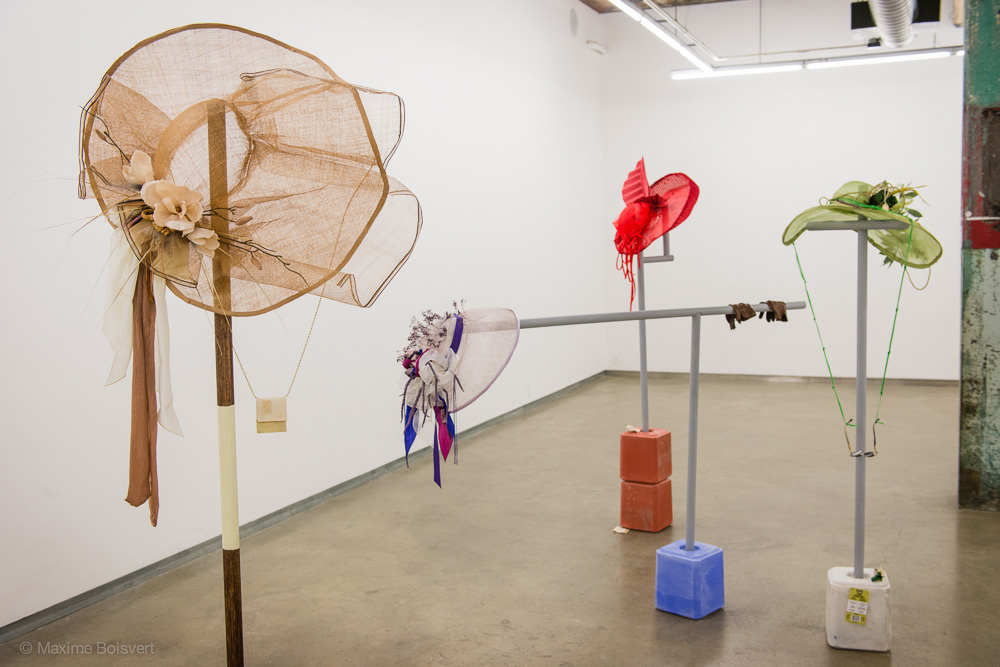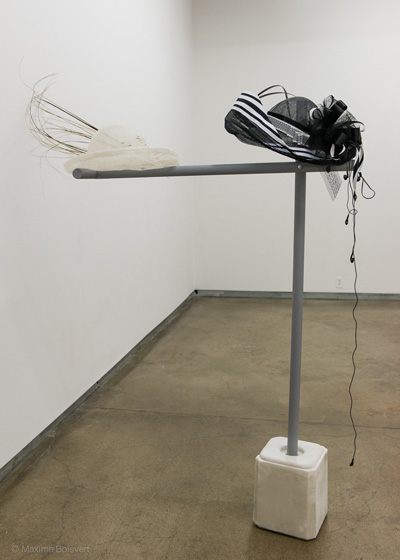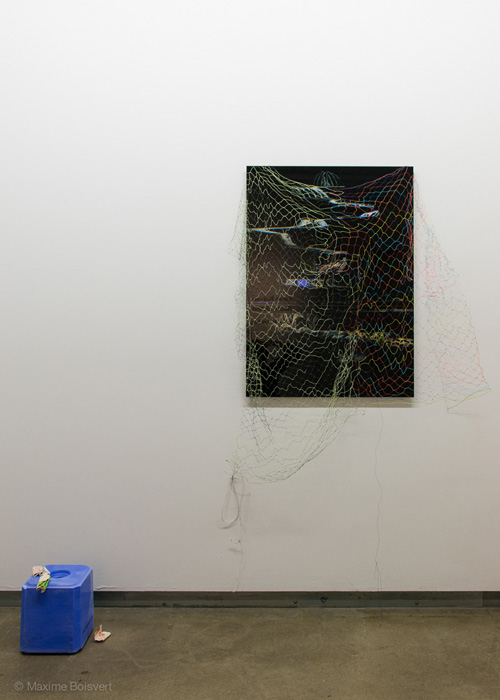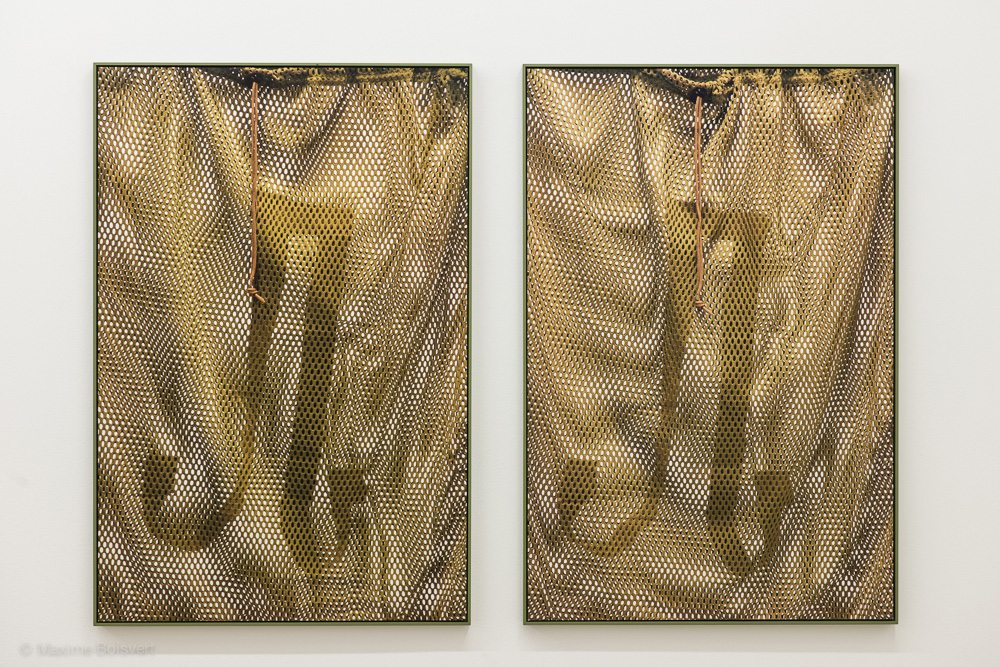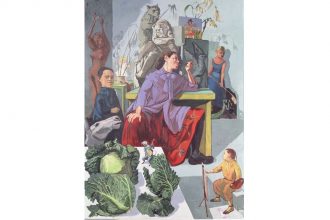As viewers of art – and as living things – we are built to find patterns, to process vast and various data with frenetic pace and syncretic mode. In mere moments we can measure similarities, recall past knowledge, and develop provisional conclusions to sidestep missing information, and we do it constantly, effortlessly. Karen Kraven’s latest exhibition, Razzle Dazzle Sis Boom Bah, confounds that faculty, tricks us and turns us away from the expected. Even more concise, exhibition curator Nicholas Brown characterizes it as “flamboyant misdirection,” speaking specifically of the method of camouflaging ships used by various navies in the early twentieth century. The term equally applies to the old song-and-dance number of diverting attention from the main event (see Fosse’s Chicago), or the chant of a cheerleading squad (including the explosive “sis boom bah”), and furthermore to a game of chance (particularly a fixed one) or the fast and loose speech of a con artist or a snake-oil salesman. Traces of each of these readings can be found throughout the exhibition, from a manipulated scan of a duck decoy in the entrance (Decoy, all works 2014) whose motions during the scan have disrupted the apprehension of its own image, to photos of mesh that recall sports jerseys, to scattered ticket stubs from horse racetracks, to the complex geometric abstractions that add security to our currency.
Each of these propose equal entry points to Kraven’s Darling Foundry exhibition: the ticket stubs, for instance, speak to gambling and luck, and have their own relationships to a smattering of hats that punctuate the space (fascinators, in fact, worn at derbies) as well as porcelain replicas of dollar bills. The paper money and headgear share shabby, handmade qualities, both fashioned from materials not meant for the production of those objects. These sets of objects connect again through the inclusion of salt licks used as ballasts for hat stands. The salt licks are relatively innocuous, but furnish connections to racing (salt being a necessity for mineral-poor horses) as well as to money (salt as an ancient means of payment and the root of the word salary). But salt also implies a relationship to hunting: herbivorous game can’t get enough of the stuff, and so salt licks have found wide use as bait.
Chains of associative interpretation aren’t limited to linguo-cultural crossovers. A delightful material and graphical unity arises from the intersection of the gauzy lace fascinators, the jersey-like mesh of Dawn Hunt and Dusk Hunt, volleyball nets that hang over the entrance to the space, and the blown-up geometric patterns of Canadian bank notes. Crossed lines and the range of visual phenomena they facilitate are evident in Moiré patterns and cast shadows, and the hats are set up at an appropriate height and canter to encourage looking through them, as well as at them. A simple color pattern repeats consistently throughout, corresponding to the de facto rainbow of pale and somewhat metallic hues of Canadian cash, asserting itself forcefully in the colored frames of wall-mounted works and subtly in nets and photographic glitches, and providing the exhibition a visual unity despite its disparate materiality.
This multiplicity of potential readings extends throughout the entirety of the exhibition – any given object or material demands to be read in three or four ways, and lends itself to endless chains of association that loop back in surprising, and occasionally startling, directions. The points of entry into the exhibition are thus abundant and expansive, and the associations baked into them broaden as they deepen, accumulating with alarming rapidity. The total effect is closer to a singular installation than multiple art works; each piece and its constituent parts are concatenated into a matrix of complementary readings. Kraven doesn’t pursue these interpretations actively, letting them permeate the exhibition generally, working up to larger and larger circles of inference, but also slipping between them, eluding a firm and final interpretation.
Kraven has spoken about her practice as working within and against self-imposed constraints, a strategy that yields peculiar combinations of tightly-associated patterns and while breaking them with the same gesture. It strikes me as a process of abstraction, whereby the very particularities of any given object are foregrounded endlessly to the point of semantic satiation. As the significance of individual parts fade, the intricate and magnificent lattice of relationships between objects comes to the fore. Treading similar ground to Joseph Kosuth’s experiments in language and signification, Kraven’s handling of this very sensitive operation is anti-didactic and exhilaratingly revelatory.
The greatest results of Kraven’s exploration are the sheer joy of association, and the satisfaction of that effort. With simple materials and careful consideration, she has reified a semiotic process in a manner that’s not only comprehensible, but exciting to partake in. Perhaps the most beautiful aspect of Karen Kraven’s Razzle Dazzle Sis Boom Bah is the artist’s production of a network of objects and images that confound this faculty without suppressing it, that sabotage your best efforts to interpret it without extinguishing your desire to do so.

